Live Home 3D Workspace
The 3D View
The 3D view displays a 3D model of your project. In the 3D window, you can move objects, change materials, adjust lighting and more. You can also walk around in the 3D space and take pictures.
To open the 3D view, click the 3D View button in the toolbar.
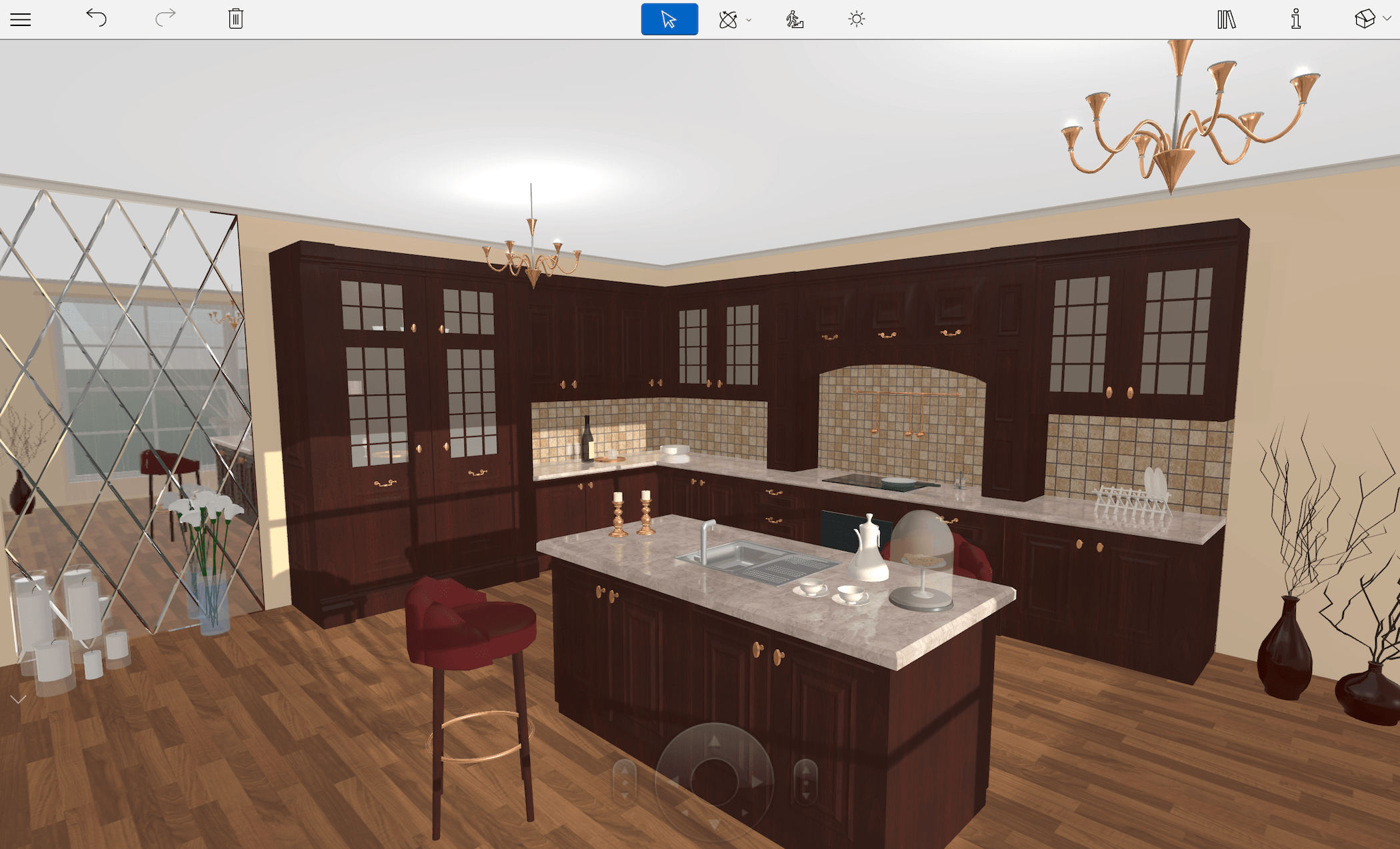
The 3D Toolbar

1 β Open the menu.
2 and 3 β The Undo and Redo buttons.
4 - Delete a selected object(s).

5 β The Selection tool for selecting and moving objects.
6 - Tools to navigate in 3D.

The Walk tool displays arrows when you are moving the cursor along the edges of the view. The direction of an arrow changes depending on the cursor position. If you click, you will move in the 3D space in the direction of the arrow.
With the Fly Around tool, you can click at some point and drag in order to move around the selected point.
The Look Around tool lets you rotate the view around your current view point.
7 β Allow or disallow walking in 3D through walls and other objects. Walking through doors is always possible.
8 β Display the picture with or without the lighting. Turning the lighting off makes the view respond faster.
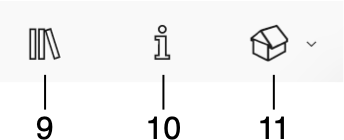
9 β Open or close the Library which gives you access to the library of materials, library of objects and Project Tree.
10 β Open or close the Inspector.
11 β Bring up a pop-up menu that allows you to choose the 2D Plan view, 2D Elevation view (Pro edition only) or 3D view.
A camera icon may be displayed in the top right corner of the 3D view. The icon indicates that the current view is linked to one of user cameras.
If you extend the main window horizontally to give the 3D view as much space on your screen as possible, the 3D view may not take the available area entirely leaving empty borders on the sides. This happens because of limitations of your computer hardware.
Walking Around
There are several ways to navigate inside your 3D model. One of the possibilities is to use the toolbar buttons described earlier. There is also a specialized tool called the Walk Control with areas sensitive to clicks. The direction of movement depends on what area you click on.
Walk Controls
The Walk Controls appear at the bottom of the 3D view. These controls are available in two forms: one control in the middle or a joystick in the corner. The joystick may be more handy for touch screen users. However, the single control is easier to use with the mouse. You can choose the preferred method in the 3D section of the Settings. The Automatically option in the Settings activates the Central Walk Control when you operate with the mouse, and the Joystick when you touch the screen.
To show or hide the walk controls, click the button at the left side of the screen.
Joystick
To operate the joystick, move its handle within the dark area. The farther you pull the handle off the center, the faster you move.
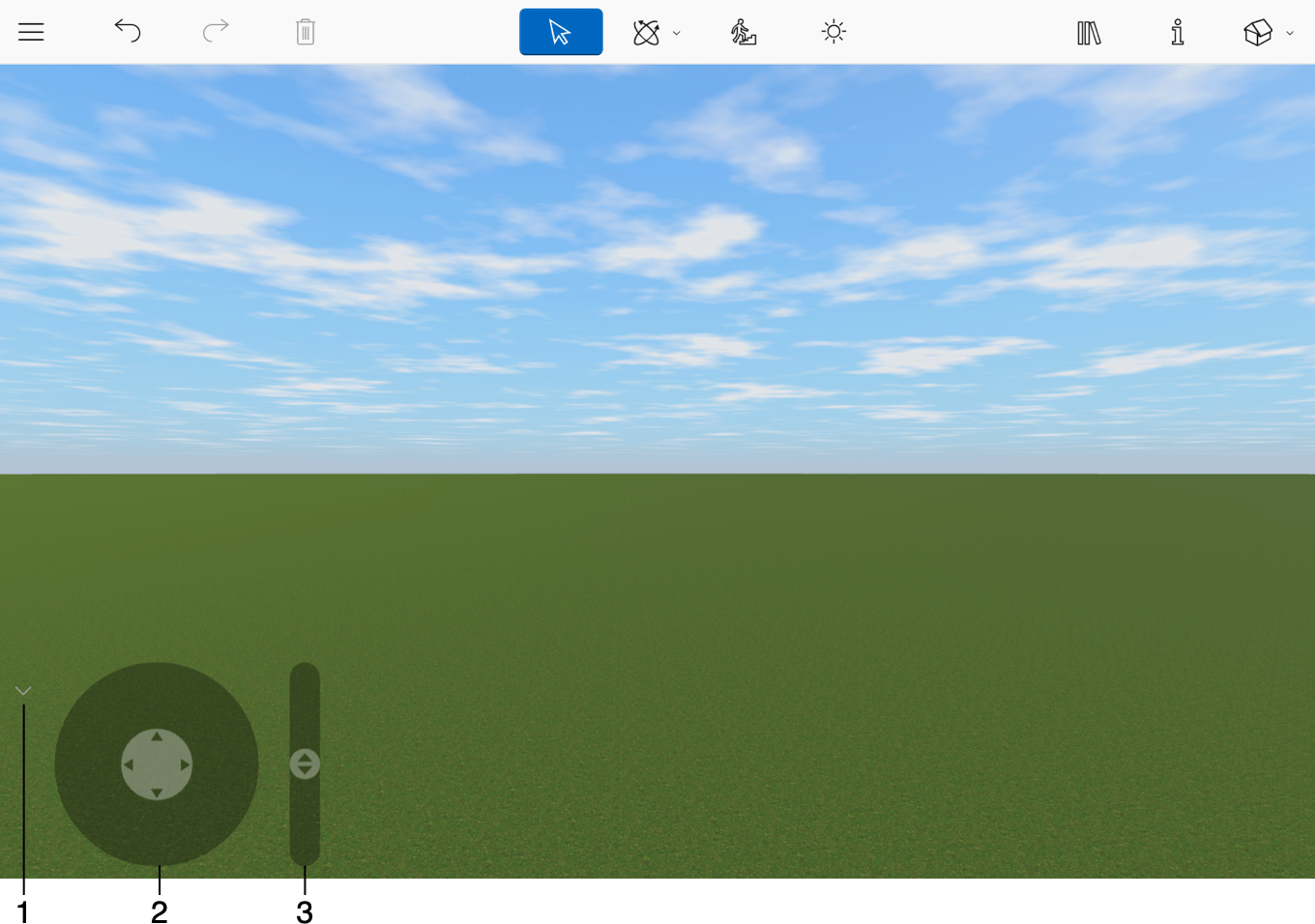
1 β Show or hide the walk control.
2 β Move around horizontally.
3 β Move up or down.
Central Walk Control
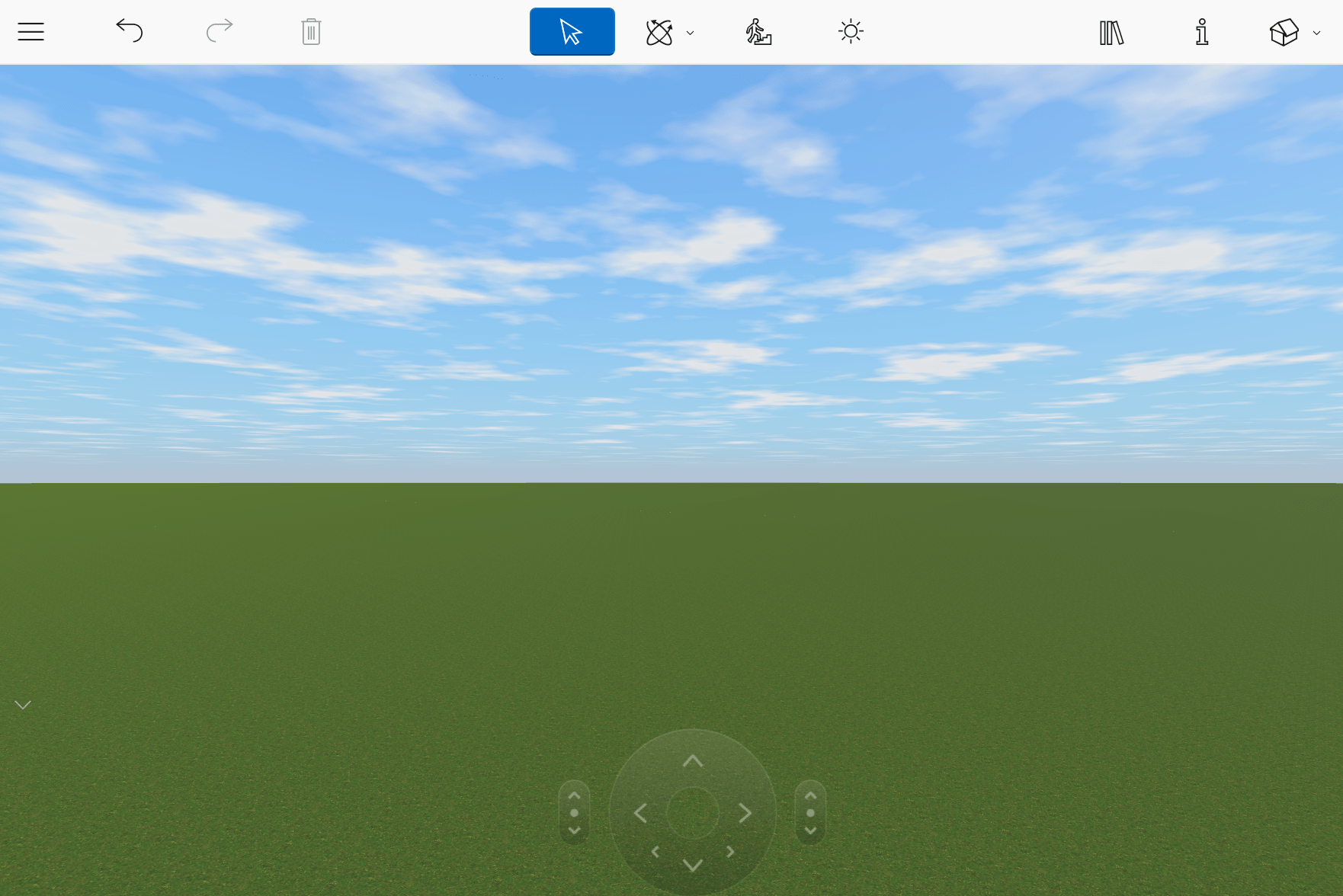
The walking speed depends on the rendering quality. At higher quality settings, the movement can be slower. In order to move faster, turn off the lighting in the toolbar, and/or decrease values in the 3D section of the Settings. You can edit your project at a lower rendering quality that provides the most comfortable work with the 3D view. You can then set higher quality to take pictures.
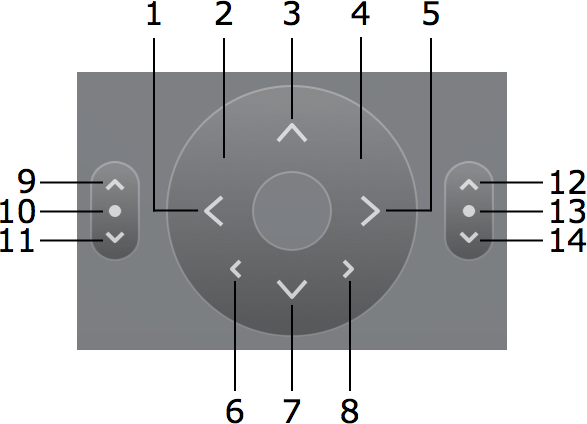
1 β Turn to the left.
2 β Move forward, turning to the left.
3 β Move forward.
4 β Move forward, turning to the right.
5 β Turn to the right.
6 β Move to the left.
7 β Move backward.
8 β Move to the right.
Camera Pitch
9 β Look upwards.
10 β Double-click to look straight forward.
11 β Looking downwards.
Camera Elevation
12 β Move the camera up.
13 β Double-click to restore the default level.
14 β Move the camera down.
Using the Keyboard
The keyboard arrow keys can be used to move forward, backward, and turning left and right. The alternative shortcuts are shown in brackets.
| Up (W) | Move forward |
| Down (S) | Move backward |
| Left | Turn to the left |
| Right | Turn to the right |
| Ctrl-Up (Q) | Tilt the camera up |
| Ctrl-Down (Z) | Tilt the camera down |
| Alt-Up (E) | Move the camera up |
| Alt-Down (C) | Move the camera down |
| Alt-Left (A) | Move the camera to the left |
| Alt-Right (D) | Move the camera to the right |
Moving Objects in the 3D View
To move an object horizontally in the 3D view, drag it to a new place.
The Glue By option in the Inspector defines how an object moves in relation to the floor, walls and other objects. When the option is disabled, you can drag the object strictly horizontally. When it is enabled, the object will snap to the floor, walls or other object, and will be able to change its elevation. For example, if you move a vase (with Glue by Bottom activated) off a table, it will fall onto the floor.
To make the object elevation constant, activate the Lock Elevation option in the Inspector.